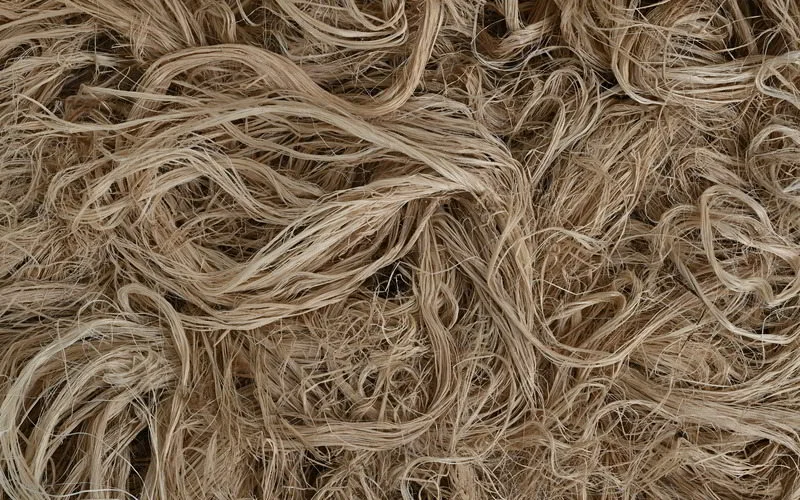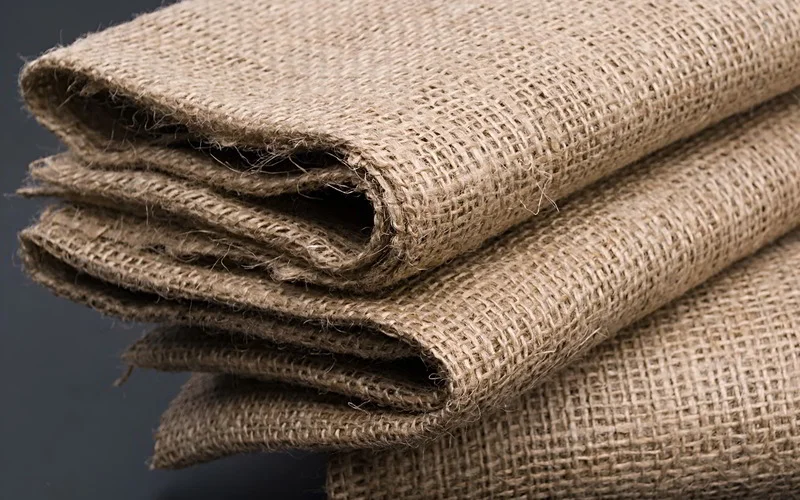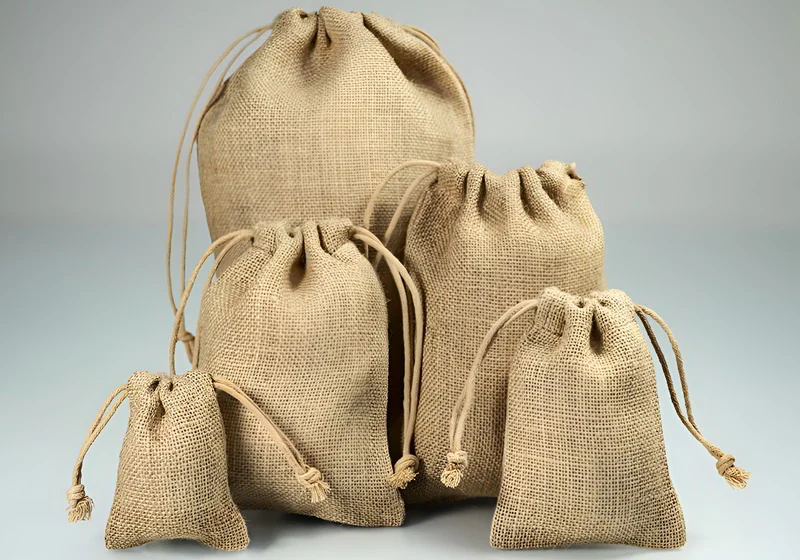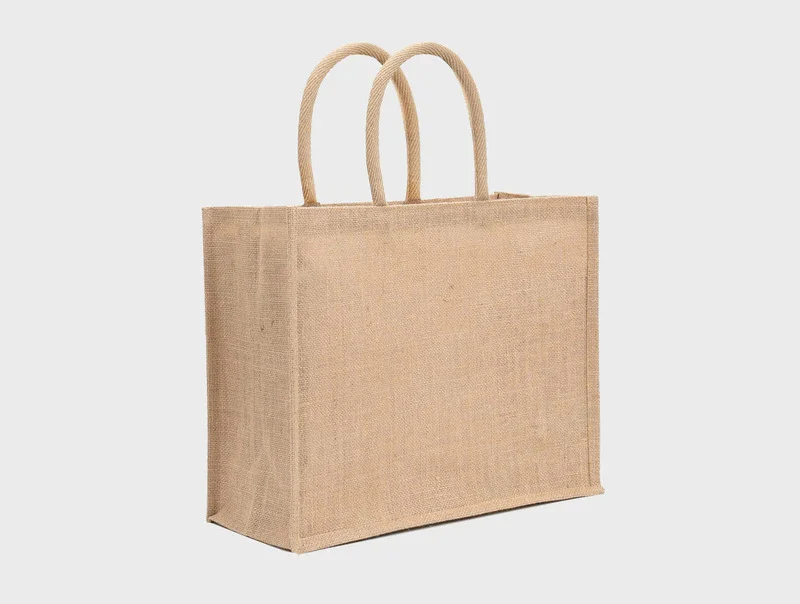What is Jute: Unpacking the Eco-Friendly Golden Fiber
Delve into jute, the renowned “Golden Fiber” – a remarkable, plant-based natural material offering significant environmental advantages. This guide unpacks its origins, from where the jute plant grows to how its fibers are processed. You’ll gain a clear understanding of jute’s distinct characteristics, including its look and feel.
Discover the compelling benefits of this eco-friendly resource and explore its versatile applications in everyday products. Learn why choosing jute supports a more sustainable world and contributes to a healthier planet. This comprehensive overview will reveal why jute is a valuable and eco-conscious choice.
1. Where does jute come from?
1.1 The jute plant
Jute fiber originates from a specific plant. The scientific name for this plant group is Corchorus. Imagine a tall, skinny plant, like a very tall blade of grass, that can grow up to 3 or 4 meters high – that’s as tall as some small trees! It has long, green stems and green leaves. The useful jute fiber is found in the skin or bark of the plant’s stem.
Jute plants love warm and wet weather. They grow best in tropical areas that get a lot of rain, especially during the monsoon season (a time of heavy rain). Countries like India and Bangladesh are famous for growing a lot of the world’s jute.

1.2 How jute fiber is made
Here’s how we get jute:
- Growing and harvesting: First, farmers plant jute seeds and the plants grow quite quickly. When the plants are ready, usually after a few months when they start to flower, they are cut down close to the ground.
- Soaking the stems (retting): This next part is very important and is called retting (a process of soaking plant stems to help separate fibers). The cut jute stems are tied into bundles and soaked in water for several days, often in slow-moving rivers, ponds, or special water tanks. This soaking process helps to soften the outer part of the stem. Tiny natural organisms in the water, called bacteria, help to break down the gummy substances (or pectin) that bind the fibers, making it easier to separate the jute fibers from the woody core of the stem.
- Separating and washing the fibers: After retting, workers take the softened stems from the water. They then carefully pull or strip the long, soft fibers away from the plant stalks by hand. Once separated, these long fibers are washed with clean water to remove any dirt or leftover plant bits.
- Drying and spinning into threads: The clean, wet jute fibers are then hung up on lines or spread out to dry in the sun. When the fibers are completely dry, they look like long strands of hair. These dried fibers are then gathered and spun (twisted) together to make strong jute yarn. This yarn can then be woven into fabric, or used to make threads and other jute products.
2. What is jute like?
Understanding what jute feels and looks like helps you choose it for the right purpose.
2.1 Texture
If you touch jute fabric, it usually feels a bit rough and coarse, not silky smooth. This gives it a unique, natural, and ‘earthy’ character. Many people appreciate this rustic quality for its natural appearance and texture. While some jute can be processed to be a little softer, its typical slightly rough feel is part of what makes it special.
At Packlove, we find that many customers choose jute specifically for this natural, rustic texture when they want their brand to convey an eco-friendly and authentic image.

2.2 Strength
Jute is known for being very strong. The fibers are tough, and they don’t tear easily. This means jute is a durable material. Because it’s so strong, it’s excellent for making bags that need to carry heavy items, or for products that need to last a long time. This high tensile strength is a key characteristic of jute.
2.3 Appearance
Natural jute has a beautiful, warm, golden-brown color. This is why it earned the nickname ‘Golden Fiber’! It has a natural shine. While many people love this natural look, jute can also be dyed into many different bright and beautiful colors. So, you can find jute products in all sorts of shades.
2.4 Other properties
- Good breathability: Jute fabric lets air pass through it easily. This means it’s ‘breathable.’ This is a good quality for items that need ventilation, like bags for carrying some types of food (like potatoes or onions) that need to stay dry.
- Absorbent: Jute fibers can soak up moisture, like water. This can be useful because it helps jute take dye well if you want to color it. However, it also means that jute items should be kept dry, as too much moisture for too long can weaken them (we’ll talk more about care later). This absorbency is an important characteristic of the material.
- Long fibers for toughness: The individual fibers that come from the jute plant are quite long. When these long fibers are spun into yarn and woven into fabric, they contribute to the overall toughness of the material.
3. Why choose jute?
Choosing jute offers many advantages, especially for our planet.
3.1 Jute is great for the Earth!
Jute is a very sustainable and eco-friendly material. Here’s why:
- Biodegradable: This is a very important benefit. ‘Biodegradable’ means that when a jute product is no longer useful and is discarded, it will break down naturally in the soil over time, much like a plant leaf. It doesn’t stay in the environment for hundreds of years like plastic, so it doesn’t cause long-term pollution. This is a key aspect of its positive environmental impact, as jute is both biodegradable and renewable.
- Renewable resource: Jute is a renewable resource. This means we can grow more jute plants relatively quickly – a new crop can be ready in just a few months. So, as long as we farm it responsibly, we won’t run out of jute.
- Needs less water and chemicals: Compared to some other crops, like conventional (non-organic) cotton, growing jute often requires less water. Jute plants are also quite hardy and often need fewer pesticides (chemicals to kill bugs) and fertilizers (chemicals to help plants grow) to thrive. This is better for the soil and water.
- Cleans the air: While jute plants are growing, they help clean the air! Like other plants, they absorb carbon dioxide (CO2) from the atmosphere. CO2 is a gas that contributes to climate change, so jute plants play a small part in making our air better through carbon dioxide absorption.
- Improves soil quality: Growing jute can actually be good for the soil. The leaves and roots of the jute plant can add nutrients back into the soil as they decompose, making the land more fertile for future crops.
3.2 Durable and long-lasting
Products made from jute, such as bags or home furnishings, are very durable and can last for a long time if cared for properly, giving you good value for your money.
3.3 Affordable
Despite all its great qualities, jute is often one of the least expensive natural fibers available. This makes it an accessible and budget-friendly choice for many different uses, for both individuals and businesses.
3.4 Versatile
Jute is also very ‘versatile,’ which means it can be used to make a wide variety of different products. From heavy-duty sacks to stylish fashion accessories and home decor, jute is useful in many ways.

4. What is jute used for?
Jute is found in many products we see and use.
4.1 Traditional uses
- Sacks and bags: For many, many years, jute has been the go-to material for making strong jute sacks and bags. You’ve probably seen them used for things like coffee beans, rice, potatoes, cocoa, or even sand. These are often called Burlap bags or Hessian sacks, and they are typically made from jute. Jute is perfect for this because it’s very strong, relatively cheap, and for some goods (like coffee beans), it allows air to circulate, which is important.
- Ropes and twine: Because of its strength, jute fibers are twisted together to make sturdy rope, cords, and twine used for tying, bundling, and many agricultural or garden purposes.
- Carpet backing: Jute is also traditionally used as a backing material for carpets and rugs. It provides a strong and stable base for the carpet pile.
4.2 Modern uses in everyday life
- Shopping bags & tote bags: Today, reusable jute bags and fashionable tote bags are extremely popular. They are a fantastic eco-friendly alternative to single-use plastic bags and are durable for carrying groceries or daily essentials.
- Home decor: Jute is widely used in home furnishings to add a natural, rustic, or bohemian touch. You can find jute rugs of all sizes, curtains, placemats, table runners, cushion covers, baskets, and even wall hangings. These jute items are popular choices for home decor.
- Crafts: Jute is a favorite material for crafters! Jute fabric, colorful jute ribbons, and various thicknesses of jute string or twine are used for DIY projects, gift wrapping, making decorations, macramé, and scrapbooking.

4.3 Jute for packaging and branding
Jute is excellent for eco-friendly packaging materials and sustainable branding materials.
- Eco-friendly product tags: Jute makes excellent jute tags that add a natural, earthy, and sustainable feel to items. Think of jute tags on clothing, handmade soaps, artisanal food products, or eco-conscious gifts. They immediately tell a story about the brand’s values. For example, Packlove could help a business design a simple, elegant jute tag printed with their logo. This is an excellent example of positioning jute as a rustic and eco-conscious branding choice.
- Small pouches or gift bags: Small jute drawstring pouches or gift bags are perfect for such applications. They offer a charming and eco-friendly presentation that customers appreciate. These can be customized with a brand’s name or a simple design, highlighting the durability of jute for reusable packaging items.
- A great way for businesses to show they care: Using jute in packaging, whether for tags, bags, or decorative elements, is a clear way for businesses to demonstrate their commitment to sustainability. It helps build a brand image that is environmentally aware and responsible. At Packlove, we understand that packaging is a vital part of branding. We often advise clients that choosing materials like jute can powerfully communicate their eco-friendly ethos and connect with conscious consumers.
5. Things to keep in mind when using jute
While jute is wonderful, here are a few things to know:
- Texture: While many love its natural roughness (coarseness), remember that standard jute might feel too coarse for items meant for very sensitive skin, like baby clothes, unless it’s a specially processed softer jute or blended with other fibers.
- Shedding: New jute products can sometimes shed small, loose fibers. This is normal and usually lessens over time with use and gentle handling. A quick shake outdoors can help remove loose bits.
- Printing: Printing on jute is definitely possible and can look great! However, because of jute’s natural, uneven texture, simple and bold designs, logos, or text usually work best and look clearer than very fine, intricate details. At Packlove, based on our experience with customizing products made from natural fibers, we often recommend designs with strong lines for printing on jute to achieve the most impactful result.
- Water: Jute is absorbent, meaning it soaks up water. If jute gets very wet and stays damp for a long time, it can weaken, stretch out of shape, or even develop mildew (a type of mold). It’s best to keep jute items dry. If they do get wet, allow them to air dry thoroughly and flat if possible.
6. Frequently asked questions about jute
Here are answers to some common questions:
6.1 Is jute the same as burlap or hessian?
Mostly, yes. “Burlap” (often used in North America) and “Hessian” (often used in other parts of the world) are common names for a type of fabric that is usually made from jute fiber. These terms typically refer to the coarser, loosely woven jute fabric often used for sacks and rustic crafts. So if you’re wondering what is hessian fabric, it’s usually jute.
6.2 Is jute an expensive material?
No, generally jute is one of the most affordable natural fibers available. This is one of its big advantages, making it accessible for many uses.
6.3 Can I wash jute products?
It’s best to be careful. For most jute items, spot cleaning (cleaning only the dirty spot with a damp cloth) is recommended. If you must wash it, gentle hand washing in cold water is better than machine washing, which can damage the fibers or cause the item to lose its shape. Always check if there’s a care label on the product. Avoid wringing or twisting, and air dry flat if possible.
6.4 How long does jute last?
Jute is quite a strong and durable material, so products made from it can last for a long time, especially if they are well-made and cared for properly. For example, a jute shopping bag can last for many years with regular use.
6.5 Is jute better for the environment than cotton?
When comparing jute to conventional cotton (non-organic cotton, which is most commonly grown), jute generally has a lower environmental impact. Growing jute typically requires less water, fewer pesticides, and fewer fertilizers. Organic cotton, however, also has significant environmental benefits. A comparison of jute vs. cotton vs. hemp often shows jute favorably for certain environmental factors.
6.6 Can jute be recycled?
Jute is 100% biodegradable, which means it will naturally decompose and return to the earth when composted. This is its most eco-friendly end-of-life option. While textile recycling programs for jute might not be widely available everywhere like they are for paper or some plastics, its ability to biodegrade is a major environmental plus.
Explore more:
In conclusion, jute is a truly fantastic natural material. It’s strong, versatile (meaning it can be used for many things), often affordable, and incredibly good for our environment. Understanding jute properties and uses shows it’s a simple fiber with a big positive impact.
So, whether you’re looking for sustainable options for your personal projects or your business needs packaging that tells an eco-friendly material story, jute is definitely a material worth considering. Choosing jute is a great way to embrace nature and make a positive choice for the planet.
Interested in custom eco-friendly solutions like jute tags or pouches? Get a quote from Packlove today and let’s create something amazing together!






















